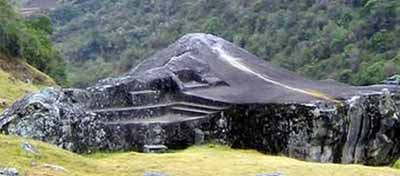
After the conquest of Peru, the Inca and his most loyal followers maintained their religion, traditions and state in Vilcabamba in Cusco (Cuzco).
Known for the highway banditry and infuriating diplomacy of the inhabitants, Vilcabamba became the Sherwood Forest of early colonial Peru until in 1572, when it was penetrated and the Inca captured and killed. We trace a series of important ruined forts chronicled during the extirpation of the Incas, but not located nor excavated until quite recently.
We leave Cusco (Cuzco) by our private van at 6:20 in the morning. The Malaga pass is 4,200 metres high. In about five hours we reach Chaullay, at the mouth of the Vilcabamba River on the Urubamba, at 1890 masl. From here we take a truck to Huancacalle, which will take about three hours. We are now at about 3000 masl.
Today we see the ruins a top RosasPata, the most important of which is Vitcos. We return at night.
Today We climb 17 km, over the pass called Qollpaqasa, and camp on the other side. We are now at about 3700 masl.
From today we will be descending along the Consevidayoc River. Today we hike 12 km. We pass Maukachaka and then Pampaconas. In Ututo good fishing awaits us.
After only an hour or so out this morning we pass from the high Andean vegetation into a zone of high jungle. We hike 12 km. We hike 17 km today.
We hike 17 km today.
We hike 8 km heading to the west, until we reach Espiritu Pampa in Cusco (Cuzco), a natural overlook, situated in the triangle between the Pampaconas and Chomtabamba rivers and the base of a mountain. Here we find the Rumichaca, a lovely Inca bridge. After a guided tour, we camp in Chotabamba, Espiritu Pampa.
We hike the length of the steamy Espiritu Pampa valley, some 15 km, to the road below.
We take a bus for seven hours to the town of Quillabamba.
Day 10 Back to Cusco (Cuzco)
We take the bus back to Cusco (Cuzco) from Quillabamba.
Prices